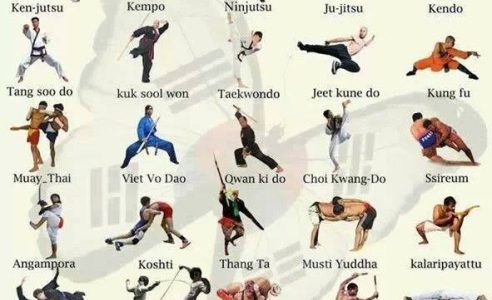The Advancement And Historic Context Of Martial Arts Worldwide
The Advancement And Historic Context Of Martial Arts Worldwide
Blog Article
Team Author-Mortensen TRUE
Martial arts have a remarkable background that extends centuries and continents. You might find it intriguing how ancient methods like Shuai Jiao and Kalaripayattu prepared for contemporary combat strategies. These self-controls not just emphasize physical skills yet likewise mirror the cultures that birthed them. As you explore their evolution, take into consideration exactly how globalization has actually changed these conventional kinds right into crossbreed styles. What impacts do you think have formed today's martial arts landscape?
Ancient Martial arts: The Structures of Battle
As you look into the world of ancient martial arts, you'll find the abundant structures that shaped combat strategies throughout cultures. Very early techniques concentrated on Self-Defense and survival, usually including strikes, hurting, and weapons.
In ancient China, as an example, methods like Shuai Jiao emphasized tosses and joint locks, while India's Kalaripayattu showcased agility and liquid movement. Japanese samurai developed Kenjutsu, a polished swordsmanship that highlighted self-control and approach.
click the up coming site served not just for battle however also as a means of personal advancement, instilling values like respect and perseverance. The mixing of these methods with time prepared for the diverse martial arts you see today, each mirroring the distinct philosophies and demands of its culture.
The Cultural Influence on Martial Arts Development
While martial arts typically show the useful requirements of a society, they also embody the cultural worths and beliefs of their origins. When you explore various martial arts, you'll notice exactly how they're influenced by religion, viewpoint, and social standards.
For instance, the focus on regard and technique in Japanese martial arts comes from Zen Buddhism and samurai culture. In contrast, Brazilian Jiu-Jitsu promotes flexibility and method, shaped by the demand for efficiency in a varied, multicultural environment.
You might find that the routines, uniforms, and training approaches reflect a neighborhood's background and identity. By understanding these cultural influences, you grow your appreciation of martial arts and their duty in shaping human experiences across the globe.
Modern Adaptations and the Globalization of Martial arts
Martial arts have changed significantly in current decades, adjusting to modern society and global impacts. krav maga private lessons near me 'll observe that traditional types have mixed with contemporary techniques, creating hybrid styles like MMA. These adaptations cater to diverse audiences, making martial arts obtainable and attractive worldwide.
With the rise of social media sites and electronic platforms, you can locate tutorials and competitions from all edges of the globe, breaking geographical obstacles. This globalization has led to a common appreciation for different techniques, from Brazilian Jiu-Jitsu to Taekwondo.
As you engage with these arts, you'll understand they're not practically fight; they advertise health and fitness, technique, and mental well-being.
Ultimately, contemporary adaptations have actually enhanced the martial arts landscape, making it a vibrant and progressing practice.
Conclusion
In checking out the history and development of martial arts, you reveal an interesting mix of methods, cultures, and approaches. From old techniques like Shuai Jiao and Kalaripayattu to the modern-day versatility seen in MMA, martial arts mirror humanity's mission for Self-Defense and personal growth. As you engage with these methods, you not only gain abilities but additionally a deeper appreciation for the varied customs that shape our world today. So, proceed your journey and embrace the art of fight!
